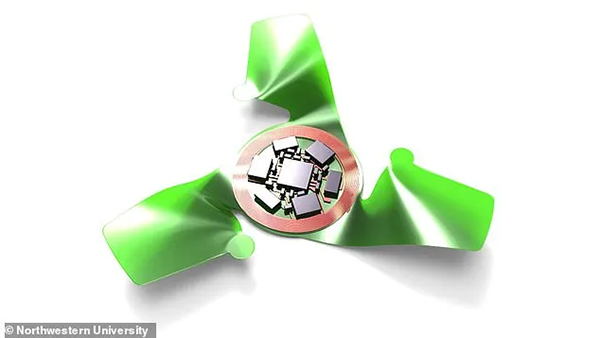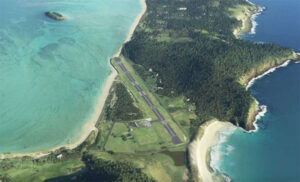
Scientists have developed a microchip that is about the size of sand or grain. This is the smallest man-made flying structure that could detect the spread of airborne diseases, say its developers. Scientists also say that microfliers can be used to monitor air pollution and pollution on an unprecedented scale.
There is no motor attached to this microflora, and it is reported that this small device acts like the propulsive seed of a maple tree and takes on a slower form as it catches wind and slides towards the ground. After studying the seeds dispersed by the wind, engineers at the Northwestern University of Evanston, Illinois, optimized the microflora according to aerodynamic data and adjusted it to a slower speed so that it could be controlled from top to bottom.
It is designed to disperse over a wide area, increasing the time spent in the air and interacting with polluted air particles and disease particles during fall. These small device versions are equipped with air pollution sensors, solar radiation study tools of various wavelengths, and a PH sensor to monitor water quality.
The U.S. team that took part in the test said the microfleer began operating as a small-scale electronic system that could be captured by sensors and allowed to fly or at least slip. The team also explained that the sensor, as well as its power sources, antennas for wireless communication and embedded memory for data storage.
Professor John Rogers, a pioneer in bioelectronics who led the development, said the main purpose of the device was to use the device to monitor air pollution monitoring, population monitoring, or disease tracking data. Professor Rogers says the group was inspired by phenomena extracted from the biological world and that it would be a step forward billions of years to develop modern aerodynamics.
He further explained that natural design concepts were inspired and developed and applied to electronic circuit platforms. These biological structures are designed to be slow and controlled so that the device can interact with wind patterns as much as possible.
Furthermore, to further design the microflora, Professor Rogers and colleagues studied the aerodynamics of the seeds of several plants directly inspired by the star-shaped flowering vine, Tristelia. Here they have found that the seeds of Tristelatia have wing blades that allow the wind to blow in a slow and rotating manner.
The shape of this device, which has three wings that are optimized for triangular angles, allows them to be connected to parts during design to develop and develop many types of microfillers.
Professor Yongang Huang, who led the theoretical work in the study to determine the structure, said that computer models of how air flows around the device had to be developed to simulate the slow controllable rotation of the Tristelatia seed.
Based on this, Professor Rogers’ team constructed and tested buildings in the laboratory and used advanced techniques to photograph and quantify flow patterns. As a result, structures can be made in a variety of sizes and shapes, some of which can give nature its ‘giveable’ properties, Professor Rogers added. It is noteworthy that the Chief Engineer said, “We think we have defeated nature.”
This ability to build structures with more stable trajectories and slower peripheral velocities than similar seeds you see in plants or trees has laid a new foundation for future experiments. It has also enabled the construction of helicopter flying structures that are smaller than those found in nature.
This finding is important for innovation because device minimization represents one of the foremost development paths in the electronics industry, and sensors, radios, batteries, and other components can be built on a small scale.






